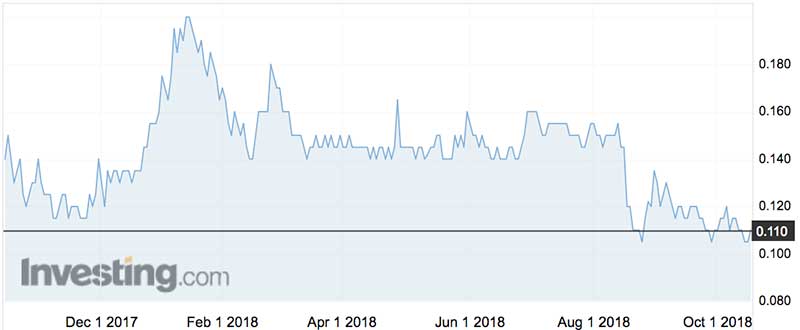What’s driving price expectations for uranium stocks

Pic: Tyler Stableford / Stone via Getty Images
Barry FitzGerald writes his legendary Garimpeiro resources column weekly for Stockhead
Disciplined and profitable growth — or put another way, value over growth.
It has become the catch cry of the world’s biggest uranium producers, Canada’s Cameco and Kazakhstan’s state-owned Kazatomprom.
And it’s tipped to support Aussie uranium juniors as action in support of the catch-cry feeds in to higher uranium price expectations.
Backed up by production cuts announced by the pair, uranium prices have been on the march.
The year to date gain from $US21.88/lb to $US27.50/lb (spot) makes uranium one of the best-performed commodities, albeit from a low base.
The production cuts by the big two is a classic pressure play.
They know the world’s nuclear power generators will need to start securing long-term supplies of the radioactive stuff in the near-term or face being 50% short of their needs come 2025.
Selling at a miserable price is no fun compared with the option of some production constraint now to force higher prices by the time new contracts are written.
And new contracts will be written. Despite the anti-nuclear brigade, nuclear power accounts for a steady 11% of (growing) world electricity generation.
Green credentials
Its “green’’ credentials are increasingly being cited in the mainstream press as a solution to the need to match up the demands of the electric vehicle revolution to base load supplies of near zero-emission power.
It takes one kilogram of uranium to produce about 50,000 kWh of electricity.
In Australia’s coal dependent states of Victoria, NSW and Queensland, 1 kg of thermal coal is good for only 3 kWh.
Having said that, nuclear power still has a bad reputation from the 2011 Fukushima disaster in Japan.
It has been a key factor in uranium prices pulling back from as much as $US135/lb in 2007 to less than $US19/lb in 2016.
Still, supporters of uranium are taking heart from the production cuts by Cameco and Kazatomprom, with the latter earlier this week registering its intent to float up to a 25% stake in an initial public offering in London and Astana.
Importantly for the uranium bugs, Kazatomprom said that it had “transitioned to a market-centric sales strategy shifting away from a focus on volume to a focus on value’’.
It is saying it no longer has an interest in flooding the market no matter what the price. It is now on board with Cameco.
Disparate as it may seem, the uranium bugs have also taken heart this week from the share price thrashing of ASX-listed Berkeley Energia (ASX:BKY).
It lost 13.5c a share or 28% of its value on Wednesday before going in to a trading halt pending an update on permitting delays at its Salamanca project in Spain:

(Reuters has reported the government has decided not to deliver the permits).
Those that saw it as a positive for the uranium market were possibly being a bit short-sighted. Salamanca has nevertheless been planned as a top 10 uranium producer with annual output of 4.4m/lbs.
- Subscribe to our daily newsletter
- Bookmark this link forsmall cap news
- Join our small cap Facebook group
- Follow us on Facebook or Twitter
Should it face serious delays, or be banned altogether, the screw tightens on uranium supplies ahead of the power utilities returning to the market in search of new supplies.
It is hard to gauge at this stage if the production cuts-boosts-prices thematic is rubbing off on Australia’s hardy bunch of uranium juniors.
If there is a rub-off, it looks to be focussed at this stage on the more advanced juniors, with uranium explorers to follow once uranium prices cracks $US30/lb or more.
Notable gains yesterday amongst the advanced juniors included Vimy (VMY, up 1.2% to 8.3c at one stage before closing at 8.1c), Deep Yellow (DYL, up 7.3% to 51c), and Boss Resources (BOE, up 3% to 6.6c).
Some of those gains were event specific (presentations or exploration updates).
But there is also little doubt that the focus on value over volume by the world’s biggest producers is also now part of the equation.
UNLOCK INSIGHTS
Discover the untold stories of emerging ASX stocks.
Daily news and expert analysis, it's free to subscribe.
By proceeding, you confirm you understand that we handle personal information in accordance with our Privacy Policy.








